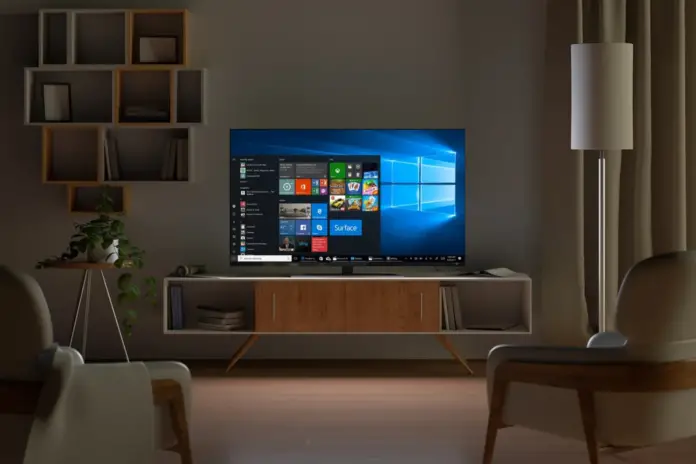Many people when buying a TV first think about how wide it should be, so it can fit on the wall in the bedroom, on a pedestal in the living room, or on a special holder in the kitchen. Of course, this comes after you have already decided on the brand and model of TV.
First of all, be sure to also calculate the distance from the potential place where you will stand or hang a TV to the place from where you will watch it. This way you can correctly calculate the diagonal size of the TV so that your eyes don’t get tired from watching and you can still see the whole picture clearly. When choosing a TV, you have also to pay attention to TV dimensions such as height, width, and thickness (depth).
If you’re sitting close to the TV, you will definitely see pixels on the screen, even if the resolution is 1920×1080. Accordingly, by increasing the distance between you and the TV, the pixel density will also increase, creating a higher quality image. This effect is called angular resolution. The further away the user is from the TV, the greater the angular resolution for a more comfortable viewing experience.
Experts recommend a 30-40 degree viewing angle.
Distance to the TV depending on the diagonal
For safe watching, the minimum distance should be at least:
- 1 meter (3,28 foot) to a 17-inch TV;
- 2 meters (6,56 foot) for 24 inches;
- 2.5 meters (8,2 foot) for 32 inches;
- 3 meters (9,8 foot) for 40 inches;
- 4 meters (13.1 foot) for 50 inches;
- 4.5 meters (14. 7 foot) for 55 inches;
- 5 meters (16.4 foot) for 60 inches.
Therefore, a distance of 2 meters (6,56 foot) is recommended for watching TV with a diagonal of 24 inches.
The TV viewing distance should also be changed depending on the resolution of your TV. Thus, the higher the resolution, the closer you can place the TV, as the pixel density increases.
In turn, a significant distance leads to the fact that the human eye is not able to consider individual pixels – the picture merges and the perception of the image becomes identical to HD or even SD. But buying a screen that is too small also does not provide comfort – the viewer has a poor grasp of details in the video image.
How big is a 24 inch TV
Let’s assume that the screen has an aspect ratio of 16:9. This is the aspect ratio of most models of modern ultra-thin TVs and monitors. In this case, the width of the TV screen will be 53.1 cm (20,87 inch) and the height of the TV screen will be 29.9 cm (11,42 inch). In turn, the depth of the TV differs most often depending on the manufacturer.
In the data given, the width and height are for the screen, not the entire TV. To find out the size of the TV you need to add the dimensions of the frame around the screen. In modern TVs, the frame is very thin and can be anywhere from a few centimeters to a few millimeters.





